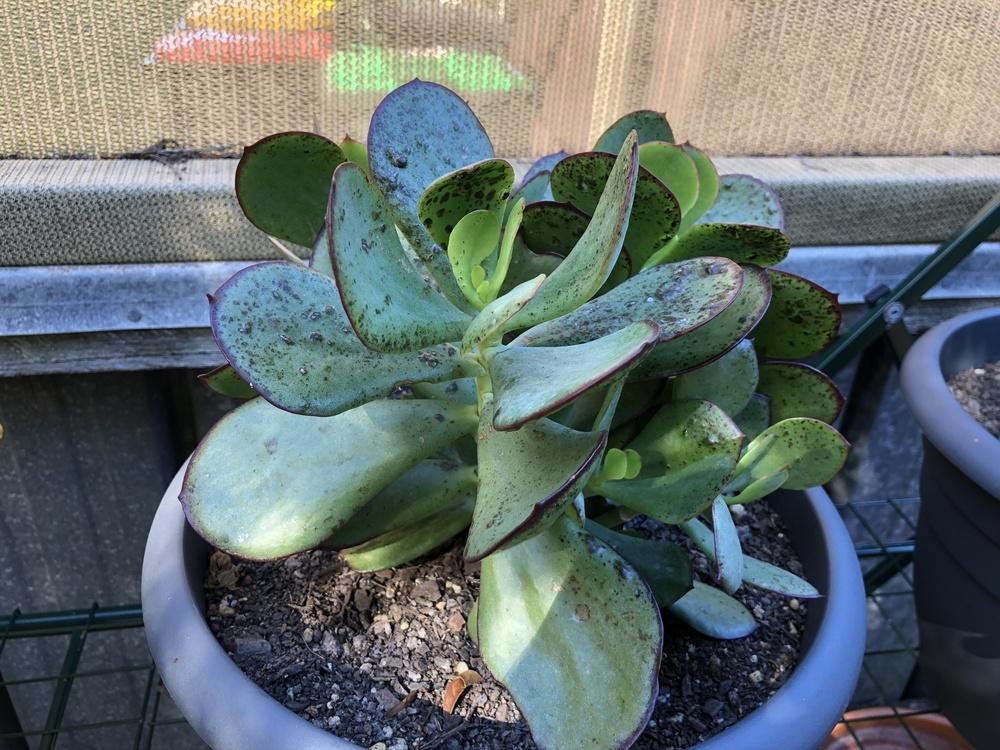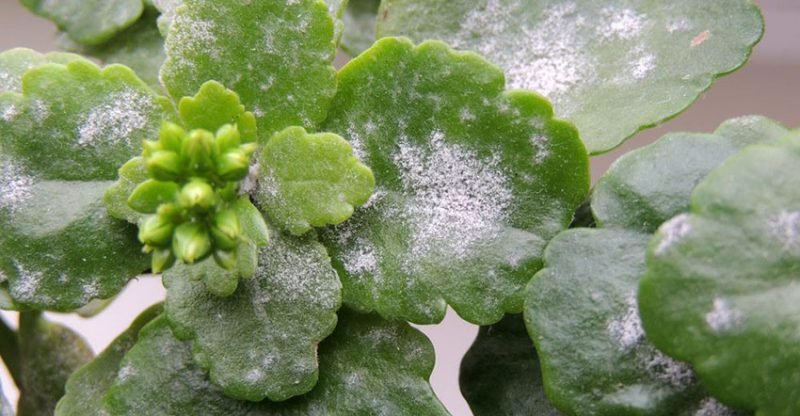Fungus on succulents occurs in damaged tissue of the succulent plants. It seems like a spot or a coating kind of thing. Fungus on succulents is a troublesome thing but is not that difficult to deal with.
When transpiration and water storage systems become imbalanced in succulents then you might get to see edema which might also enhance the chances of having fungus on succulents.
Fungus on succulents can be removed in many ways like- alcohol spray, fungicide, organic elements, etc.
We will be discussing many such related kinds of stuff here. To know read this article till the end.
What causes fungus on succulents?
Are you worried thinking what can be done if your succulent develops fungal growths? Let me tell you about some of the common causes of fungus development in succulents.
As I have already told you, succulents store extra water for surviving in desert & arid conditions. They store extra water in leaves, stems, and roots.
Too much extra water storage in plant tissue cause explode causing black spots. The fungus development starts from these ruptured black spots where the plant tissue becomes damaged.
What does fungus on succulents look like?

Haven’t experienced them but want to know what they look like so that you can identify fungal growth in your succulent at the earliest? We will help you with your concern.
A fungus looks like a round yellowish-white powdery coating on the plant body. Sometimes it also has a tinge of grey or black instead of white or yellow.
Let us now know about some of the common fungus types that we might spot in a succulent. Here goes the list below.
- White fungus on succulents is a common houseplant ailment that is easy to clean.
- Powdery mildew- This is a widespread & common disease in indoor plants. It’s a white cottony growth on leaves of fungus.
- Rust fungus on succulents occurs due to fungal parasites that need to survive on a living plant.
- Brown fungus on succulents is mainly occurred due to sunburn or due to intense light.
Sometimes gardeners ask – what are these white powder on my flapjack succulent? The white powdery thing is a kind of wax-like substance that helps plants to protect themselves from the sun and also conserve moisture.
What do black spots on succulents mean?

The black spot could be sunburn or overwatering or due to insects. But there is something worse about the black spot, they never go away.
Black spot on succulents can be the result of the probable issues as listed below.
- Overwatering
- Sunburn
- Pests
- Frost
- Root rot
All the above-mentioned issues are fungal infections
Irregular watering or wrong potting mix is the most common cause of black spot fungus on succulents. Black spots are normally a fungus that is developed in the damaged plant tissue.
How do you treat succulent disease?

Succulents are easy to grow but also have many problems that the gardeners need to deal with. Fungus on succulents is one of the major problems.
There are different type of fungus, some are surface fungi which are easy to treat while some cause internal damage. Some fungal attacks are even difficult to deal with.
Here we will discuss some of the common fungus infection.
1. Sooty Mold
It’s also known as the black mold and it happens due to the presence of mealybugs, aphids, whiteflies, and scale.
2. Grey mold
It’s also an easy infection to define. As a result of this fungus, greyish-brown spores are formed on the surface.
3. Leaf spot
They look like a dark water-soaked spot on the leaves 0. These fungi are harmless but if heavily infected then it spreads to other plants.
4. Anthracnose
This fungus is quite popular among cactus plants and can also be spotted in a wide range of succulents.
5. Roots and crown rots
It is caused by a fungal pathogen and it’s very difficult to differentiate these from other fungal infections.
6. Fusarium wilt
It happens due to a pathogen known as the Fusarium oxysporum. It prevents succulents from the intake water.
How do you get rid of fungus on succulents?
Aren’t you getting any idea about how to remove the fungus formation from your succulents? Just hold on patiently for a few more times and you will get to know it all.
If fungal infection is not in a wild way then remove the part which has been infected.
Otherwise, you can use a mixture of one spoon of baking soda, one half spoon of liquid, non-detergent soap, and a gallon of water and spray the mixture on plants for killing fungus on succulents.
How to get rid of mealybugs on succulents?
Having mealybugs, succulents become endangered with the chances of getting eaten out. So, if you spot one, then at first keep them separated from the unaffected plants. Then you need to take it out of its pot and rinse it.
After that rinse the pot with hot, soapy water, and in the end, you need to replant it.
Killing mealybugs are a very important part of the process. You can rub alcohol 75% in concentration to kill them. You can also use another natural remedy which is ladybugs.
Why do succulents have waxy leaves?
Waxy leaf succulents are quite natural and it usually develops to ensure that the plants can retain the required amount of water.
This bluish wax usually is found mainly on leaves help the succulent to grow well even in full sunlight without the risk of sunburns.
What is the best fungicide for succulents?
Not knowing the right fungicide when your succulents are already affected is quite disturbing. Let me help you out with some options.
The most useful fungicide is copper fungicide. Fungicide with neem oil and sulfur is also a useful fungicide.
But fungicide can’t destroy all the fungus infections and cure damaged parts but it can stop the spread of fungus and save unaffected parts.
What to spray on succulents for bugs?
It is quite simple to prepare and all you need to do is, mix few drops of soap, 1-2 cups of water, & 1 spoon of vegetable oil and spray it onto the bugs.
Neem oil is very effective for aphids and can be helpful in the case of mealybugs too.
There is also some spray available for bugs like soapy water, pyrethrum spray, garlic, pepper spray, alcohol spray, Nicotine, Herbal water spray, etc.
How do I get rid of flies on my succulents?
There are two reasons for having fungus gnats on succulents, one of which is providing too much water to your plants and the second one is planting your succulents in the wrong type of soil.
Fungus gnats love wet soil and if your plant already has them, the next question that arises on your mind is how to get rid of fungus gnats on succulents?
Firstly, no more watering your plants now, this will ensure flies don’t linger around.
You can also use an apple cider vinegar trap to get rid of flies.
- Dish soap spray – Mix a few drops of soap with water and spray.
- Hydrogen peroxide – It’s an antibacterial element, good to avoid flies.
- Cinnamon – Its strong essence can drive flies away.
- Diatomaceous earth (DE) – Regular DE is harmful but food grade DE is safe.
How do I keep bugs from eating my succulents?
You can use alcohol to save succulents from bugs. You can spray the plant with an alcohol and water mix.
Otherwise, clean the soil and re-plant the succulents. Tea tree oil is an essential oil to remove fungal infection and keep safe from bugs.
Wash plants with water, use of hot pepper, use of nematodes, and application of floating row cover are helping you to keep bugs from succulents.
Can you spray insecticidal soap on succulents?
Yes, you can spray insecticidal soap on succulents but try an organic insecticidal soap and use it with caution.
Insecticidal soap only kills the insect when it is wet. So spray insecticidal spray repeated every four to seven days.
Will rubbing alcohol kill succulents?
Rubbing alcohol is okay only when it is isopropyl alcohol. 70% isopropyl alcohol is sold for antiseptic purposes, at this concentration, it is safe to spray on plants to kill aphids.
Can I spray neem oil on succulents?
Yes, neem oil is the best, no matter in whatever concentration. Just mix it with water and spray it on plants.
Just keep in mind that as oil it causes sunburns so spray it at night to avoid sunburns
Is hydrogen peroxide safe for succulents?
Yes, it is safe and healthy. You can water the succulents with hydrogen peroxide.
The peroxide will oxygenate the soil which is healthy for the roots of plants. It kills harmful fungus, microbes, and insect eggs. It provides extra oxygen to the root.
Conclusion
After knowing all the essentials fungus on succulents, you must be feeling quite relieved now.
Fungal infections are very common with floral beings and there is no need to panic unless it becomes worse. All you need to do is stay alarmed for the possible infections and once you spot one star the treatment.
With this article, you have now known all the ways by which you can deal with fungus on succulents and cure your indoor plant.
I wish you, floral friends, long, healthy, and green life ahead.
